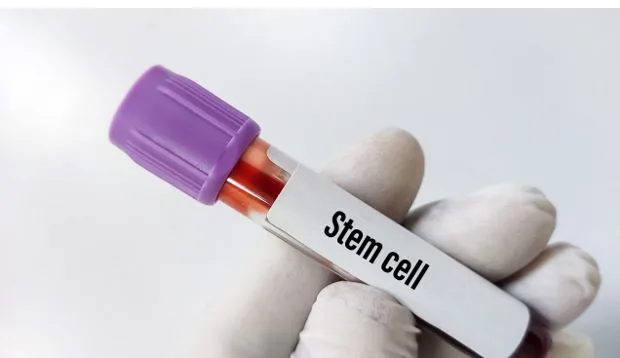Stem Cell Therapy: A New Era in Modern Medicine and Regenerative Treatment
The world of modern medicine is experiencing remarkable changes, and one of the most exciting areas of progress is stem cell therapy. What once seemed like science fiction is now becoming a reality for countless patients seeking treatment for conditions that were previously difficult or impossible to cure. This breakthrough field represents hope for millions of people worldwide who are looking for better treatment options.
Understanding the Basics of Stem Cells
Let me start by explaining what makes stem cells so special. Think of them as the body’s master cells – they’re unlike any other cells in your body. While your heart cells can only make heart tissue and your skin cells can only make skin, stem cells are different. They’re like blank pages waiting to be written on. These remarkable cells can turn into many different types of cells, and they can keep copying themselves over and over again.
Your body already uses stem cells every single day. When you get a haircut, stem cells help your hair grow back. When you accidentally cut your finger, stem cells rush to the scene to help heal the wound. Inside your bone marrow, stem cells are constantly making millions of new blood cells every minute of every day. This happens naturally without you even thinking about it.
The Science Behind Stem Cell Treatment
Scientists discovered something amazing about stem cells. They found that these cells don’t just stay in one place doing one job. When doctors take stem cells from your body and work with them in the lab, these cells can be guided to become almost any type of cell your body needs. This discovery opened up a whole new world of possibilities for treating diseases.
For the past fifteen years, researchers around the world have been working hard to understand how to use stem cells to help people get better. The focus has been on something called regenerative medicine. This fancy term simply means using the body’s own healing powers to fix what’s broken. Instead of just treating symptoms or managing disease, doctors can now work toward actually healing damaged tissues and organs.
Real-World Applications of Stem Cell Therapy
So what can stem cell therapy actually treat? The list is growing every year, but right now, doctors are using stem cells to help people with many different problems. People with damaged cartilage in their joints are finding relief. Patients with wounds that won’t heal are finally getting better. Those suffering from tissue damage due to poor blood flow are seeing improvements.
The applications extend far beyond what many people realize. Stem cell transplant procedures are helping patients with heart disease caused by blocked arteries. Burn victims are healing with less scarring. People with cosmetic concerns are finding natural-looking solutions. Even complex surgical wounds are healing faster and better with stem cell treatments.
How Stem Cell Therapy Actually Works
You might be wondering where these magical cells come from. The good news is that your body is full of them. Doctors most commonly collect stem cells from your bone marrow, which is the spongy tissue inside your bones. They can also get them from umbilical cord tissue, from the fluid around your joints, or from fat tissue.
Here’s how the process typically works. First, doctors take a small sample of tissue from your body – this is called a biopsy. Then, this sample goes to a special laboratory where scientists carefully separate out the stem cells. These cells are then grown and multiplied under very controlled conditions. The whole process can take three to four weeks because the scientists need to grow millions of cells from just a small sample.
Once enough cells have been grown, they’re ready to be put back into your body where they’re needed. The beauty of using your own cells is that your body won’t reject them. It’s like borrowing money from yourself – there’s no conflict because everything belongs to you.
The Modern Approach to Cellular Treatment
Today’s approach to mesenchymal stem cells and cellular therapy is very different from even ten years ago. Medical facilities now have dedicated centers where stem cells can be produced under the strictest safety standards. These aren’t just regular labs – they’re state-of-the-art facilities that meet international quality standards.
What makes modern stem cell therapy so promising is the team approach. Doctors from different specialties work together. A heart specialist might work with a cell biologist. A surgeon might collaborate with a genetic expert. This teamwork ensures that patients get the most comprehensive care possible.
Safety and Ethics in Stem Cell Treatment
One of the most important aspects of mesenchymal stem cells therapy is making sure everything is done safely and ethically. Reputable medical centers follow strict guidelines. Every step of the process is carefully monitored. Patient safety always comes first, and treatments are only offered when there’s solid scientific evidence to support them.
The cells produced in laboratories must meet very high standards before they can be used in patients. Scientists run multiple tests to make sure the cells are healthy, pure, and safe. Nothing is left to chance. This careful approach means that while stem cell therapy is innovative, it’s also becoming increasingly safe and reliable.
Looking at Individual Cases
Not everyone is a candidate for stem cell therapy. Doctors carefully evaluate each patient to determine if this treatment is right for them. They look at the patient’s age, overall health, and specific medical condition. They also consider whether stem cell therapy is the best option compared to other available treatments.
Some patients might need just one treatment, while others might benefit from multiple sessions. The good news is that stem cells can be frozen and stored, which means if someone needs repeated treatments, their cells are ready and waiting. This makes the process more convenient for patients who need ongoing care.
The Future Looks Bright
The field of stem cell therapy continues to evolve rapidly. Researchers are discovering new applications almost every year. Conditions that seemed untreatable just a decade ago now have hope. While we’re not at the point where stem cells can cure everything, the progress has been truly remarkable.
What’s particularly exciting is that this is just the beginning. As scientists learn more about how cells work and how to guide them more precisely, the potential applications will only grow. Gene therapy, tissue engineering, and advanced cellular treatments are all areas that promise even more breakthroughs in the coming years.
Making Sense of It All
For anyone considering stem cell transplant therapy or curious about cellular treatments, the most important thing is to work with qualified medical professionals at certified centers. Ask questions, understand the process, and make sure you’re getting treatment based on proven science rather than hype.
The era of regenerative medicine is here, and it’s changing lives. From helping hearts heal to repairing damaged joints, from treating burns to addressing chronic wounds, stem cells are proving to be one of medicine’s most valuable tools. While there’s still much to learn and discover, one thing is clear: stem cell therapy represents a fundamental shift in how we think about healing and treatment. The future of medicine isn’t just about managing disease – it’s about helping the body heal itself from within.




